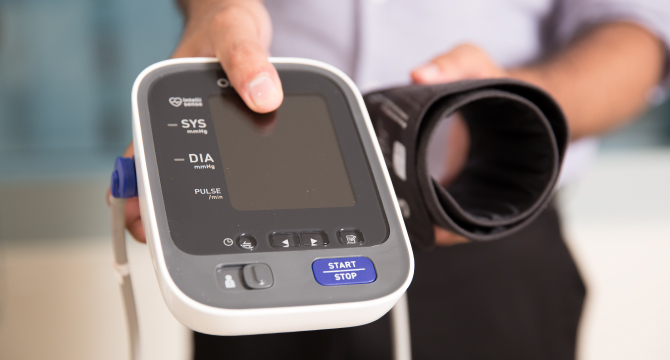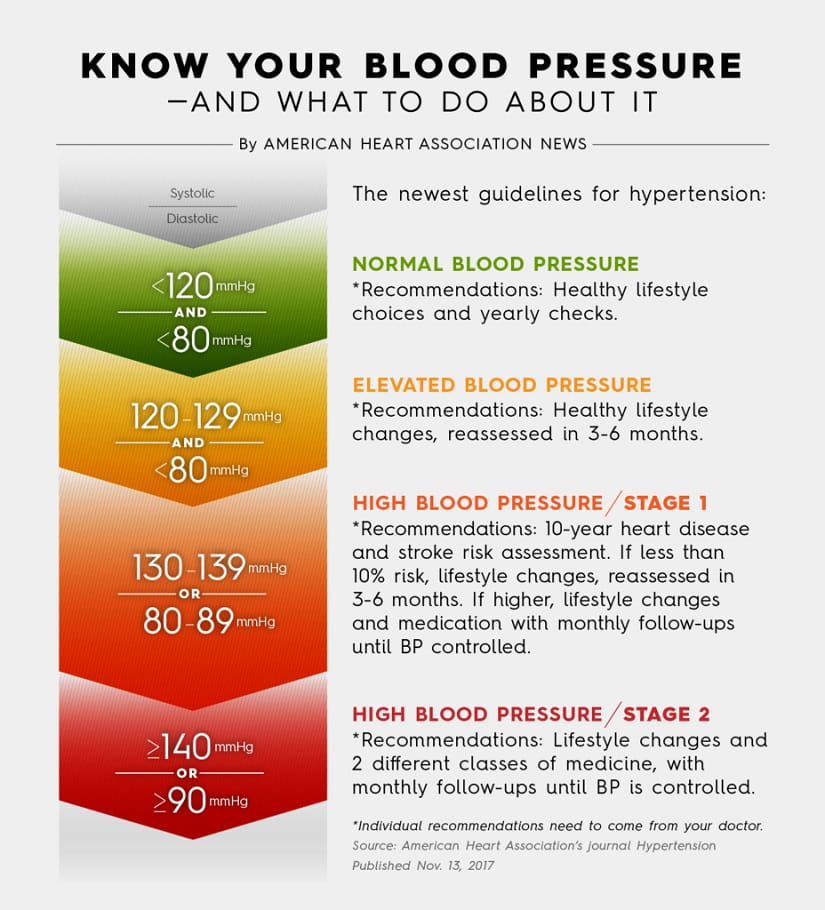Hypertension guidelines, one year later: monitoring the change
By American Heart Association News

Tim Landis was a healthy 66-year-old who hiked, biked and jogged, wasn't overweight and watched what he ate. But after he died suddenly of a heart attack in January, tests revealed years of untreated high blood pressure that caused cardiovascular disease.
At his annual physicals, Tim's systolic blood pressure (the top number) was usually in the 130s and his diastolic blood pressure (the bottom number) in the 80s, said his wife Debra. A year ago, that wasn't considered high.
Now it is.
Last November, the American College of Cardiology and American Heart Association issued new guidelines that redefined Tim's readings as stage 1 hypertension, recommending lifestyle changes and possibly medication. The old threshold for high blood pressure was 140/90.
Before then, his numbers were considered prehypertension, to be monitored but not usually treated with medication. But the new guidelines immediately reclassified about 31 million Americans as having hypertension.
"I wish Tim and I had thought to ask our health care providers about this over the years," said Debra, a freelance writer whose husband was the business editor of The State Journal-Register in Springfield, Illinois. "I also wish we would have done our own research."
Hypertension is labeled a "silent killer" because it often has no symptoms. But untreated over time, it can lead to heart disease, stroke, vision loss, kidney failure and other serious complications.
While a reading below 120/80 is still considered normal blood pressure, systolic readings of 120-129 are now considered elevated blood pressure.
"The benchmarks are changing," said Dr. Jackson Wright, director of the Clinical Hypertension Program at the University Hospitals Cleveland Medical Center and one of the guidelines' authors. "The major issue now is what's going to be the best way to implement the new target where we have conclusive evidence that they are effective in reducing cardiovascular events."
In the year since the guidelines were issued, he said, "I think that overall they have had a very positive effect. But whenever there's something new, there are going to be questions, disagreements and pushback."
Dr. Elliot Davidson, director of the Akron General Center for Family Medicine in Ohio, called the new guidelines "useful," but said the adjustment will take time.
"We're probably starting some people on medication that we would have just watched before, or we're getting them back in the office a little sooner to check their pressure," said Davidson, who was not involved in writing the ACC-AHA guidelines.
But because other organizations also issue blood pressure guidelines, he said patients are probably experiencing some guideline fatigue. "I think that makes it even more important to have a good relationship with a primary care physician who you can process this with," Davidson said.
Just having these dialogues may be one of the most significant results of the new recommendations, said Sean Stocker, director of basic and translational research at the University of Pittsburgh Hypertension Center, who was not involved in the guidelines.
"This has revitalized the discussion around blood pressure control," he said. "Whether it's new numbers or old numbers … we need to talk about not only what those numbers should be, but how do you actually diagnose this and then what do you do to treat it."
According to federal statistics, about one in six people don't know they have high blood pressure, and only about half of people with hypertension have it under control – and that's based on the old definition.

Stocker said one of the most important recommendations of the new guidelines is the need to measure blood pressure more accurately, both by training doctors and technicians better and by calibrating monitors more frequently.
As in many forms of cardiovascular disease, Stocker said, the key is awareness, and then prevention, through healthier lifestyles and, if necessary, medication.
"That's what the new guidelines are really suggesting," he said. "Look at this sooner in your lifetime as numbers start to creep up before they get too high. And start taking actions a little bit earlier to make an impact not just on high blood pressure but other diseases."
That has certainly been the impact on Debra Landis after tragically losing her husband.
"I'm keeping an eye on my blood pressure, getting more exercise and striving to lose weight," Debra said.
Sharing what happened is also crucial to the family because Tim – a lifelong journalist – would have wanted his story to help others.
"My children and I made a promise to ourselves, because Tim would want us to do this," she said.

If you have questions or comments about this story, please email [email protected].





